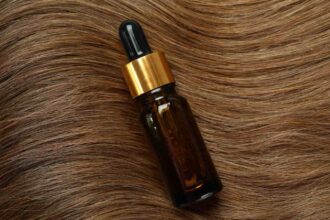Pregnancy may be one of the reasons why you are not getting your periods. But there are more causes of secondary amenorrhea.
Girls tend to get their first period soon after noticing puberty signs such as the development of breasts, and growth of pubic hair. You probably had it when you were 12 years old though it can start before or after that. Following your first period, you must be getting regular menstrual cycles. But not all women get regular periods throughout their reproductive stage. Sometimes, women who are already menstruating do not get their period for three months or more. That’s called secondary amenorrhea, which may have to do with pregnancy or other factors such as diabetes and changes in body weight.
What is secondary amenorrhea?
Amenorrhea is the absence of periods, and secondary amenorrhea is one of its types. “It refers to the absence of periods for three consecutive cycles or for six months in a woman who previously had regular periods,” explains obstetrician and gynaecologist Dr Chetna Jain.

It is not a condition itself, but rather a symptom of an underlying health problem that may be connected to hormonal, structural, or lifestyle-related factors. It is essential to identify and address the reason behind it to manage secondary amenorrhea effectively.
What are the causes of secondary amenorrhea?
There are many causes of secondary amenorrhea. But pregnancy is the most common cause, according to research published in Obstetrics and Gynecology: A Competency-Based Companion in 2010. Other causes of secondary amenorrhea include:
1. Hormonal imbalances
- Polycystic Ovary Syndrome: In women with PCOS, disruption in ovulation happens due to excess androgens. During an analysis published in StatPearls in October 2024, of all women with secondary amenorrhea, about 30 to 40 percent of them had a chronic anovulatory (lack of ovulation) disorder like PCOS.
- Thyroid disorders: Hypothyroidism (underactive thyroid) or hyperthyroidism (overactive thyroid) are among some of the conditions that affect period.
- Hyperprolactinemia: Elevated levels of prolactin (a hormone responsible for lactation) inhibit ovulation.
- Premature Ovarian Insufficiency: Early depletion of ovarian follicles leads to decreased estrogen production.
2. Lifestyle factors
- Extreme weight changes: Quickly losing a lot of weight, low body fat, or eating disorders such as anorexia, and bulimia can lead to absence of periods. “Obesity can also affect hormonal balance,” says the expert.
- Excessive exercise: Intense physical activity can suppress ovulation.
- Stress: Psychological or physical stress can disrupt the hypothalamic-pituitary-ovarian axis, which is a major regulator of the female reproductive system.
3. Reproductive system issues
- Asherman’s Syndrome: It is a condition that leads to uterine scarring, often due to surgeries like dilation and curettage.
- Uterine abnormalities: Fibroids, or polyps can lead to absence or irregular periods.
4. Medications and medical treatments
- Contraceptives: Hormonal contraceptives or intrauterine devices may disrupt periods. While taking medications such as hormonal birth control, it can stop periods, according to the American College of Obstetricians and Gynecologists.
- Medications: Antipsychotics, antidepressants, and chemotherapy drugs may also have an impact on your menstrual cycle.
- Radiation or surgery: Treatments targeting the pelvic area or brain can affect reproductive hormones.
5. Chronic medical conditions
- Diabetes: “Chronic conditions like diabetes can impact hormonal regulation,” says the expert. During a 2006 study published in the Human Reproduction journal, in the pre-pubertal diabetic group, 7 percent of them had secondary amenorrhea. Researchers also found that in the post-pubertal diabetic group, 12 percent of them had this type of amenorrhea.
- Pituitary tumors: These are noncancerous growths in the pituitary gland that can affect hormone production.

What are the symptoms of secondary amenorrhea?
Apart from the absence of periods for three months in a row, women may also experience the following symptoms:
- Hot flashes or night sweats
- Vaginal dryness
- Acne or excess facial or body hair growth
- Breast discharge
- Weight gain or loss
- Decrease in breast size
- Pelvic pain
- Infertility
- Osteoporosis
- Fatigue
- Hair thinning
What is the difference between primary and secondary amenorrhea?
“The main difference is that in primary amenorrhea, menstruation never starts. In the case of the secondary one, it occurs after menstrual cycles have already begun,” says Dr Jain.
Even the causes of these two types are different.
You may also like


- Primary amenorrhea: When it comes to primary amenorrhea, the majority of cases are due to gonadal dysfunction, a medical condition that affects the gonads or reproductive organs. During research published in StatPearls in 2023, it was found that 43 percent of the participants with primary amenorrhea had this condition. Delay of growth and puberty is another cause.
- Secondary amenorrhea: There are hormonal, lifestyle, or medical conditions behind it though pregnancy is the most common cause.
What are the treatment options for secondary amenorrhea?
Like any other health condition, treatment for secondary amenorrhea focuses on addressing the underlying cause.
1. Lifestyle changes
If secondary amenorrhea is due to lifestyle factors, the following changes can help restore menstrual cycles:
- Balanced diet: “Correct malnutrition or obesity by adopting a healthy eating plan,” says the expert. Include vegetables, whole grains, fruits, nuts, and seeds in your diet.
- Weight management: Gain weight if you are underweight or increase your body fat. Lose weight if obesity is a contributing factor.
- Modify exercise routine: Reduce excessive physical activity if you are working too hard in the gym.
2. Medical treatments
- Estrogen or progesterone supplements can help to restore hormonal balance and protect against bone loss.
- Combined oral contraceptives will help to regulate cycles and balance hormones.
- Dopamine agonists like cabergoline or bromocriptine will help to reduce prolactin levels.
- For fertility, drugs like clomiphene citrate may be prescribed.
3. Treatment for underlying conditions
- Polycystic Ovary Syndrome: Lifestyle modifications, insulin-sensitising drugs (e.g., metformin), and hormonal therapy may help.
- Asherman’s Syndrome: Your doctor may suggest you undergo surgery (hysteroscopy) to remove uterine adhesions.
4. Surgical interventions
- Pituitary tumors: Surgery or radiation therapy if the tumour is large or unresponsive to medication.
- Uterine abnormalities: Surgery for structural issues like fibroids or polyps.
5. Supportive therapies
- Calcium and vitamin D supplementation may be given if low estrogen levels are affecting bone density.
- For women desiring to get pregnant, ovulation-stimulating treatments or assisted reproductive technologies may be considered.
Treatment plans for secondary amenorrhea should be made according to the cause. With appropriate treatment, you may recover your menstrual cycle and prevent long-term complications such as infertility or osteoporosis.
Related FAQs
Is secondary amenorrhea dangerous?
Secondary amenorrhea is not inherently dangerous, but it can be a symptom of underlying health issues that may have serious implications if left untreated. Chronic anovulation (lack of ovulation) can make it difficult to conceive, and prolonged absence of estrogen due to conditions like premature ovarian insufficiency or hypothalamic amenorrhea can lead to low bone density or osteoporosis.
Can PCOS cause secondary amenorrhea?
Yes, Polycystic Ovary Syndrome (PCOS) is a common cause of secondary amenorrhea. It is a hormonal disorder that prevents regular ovulation because the ovaries fail to release eggs regularly. Without ovulation, the menstrual cycle is disrupted, leading to missed periods. Increased levels of androgens and imbalanced estrogen and progesterone levels interfere with the menstrual cycle.
Disclaimer: At Health Shots, we are committed to providing accurate, reliable, and authentic information to support your health and well-being. However, the content on this website is intended solely for informational purposes and should not be considered a substitute for professional medical advice, diagnosis, or treatment. Always consult a qualified healthcare provider for personalised advice regarding your specific medical condition or concerns.









